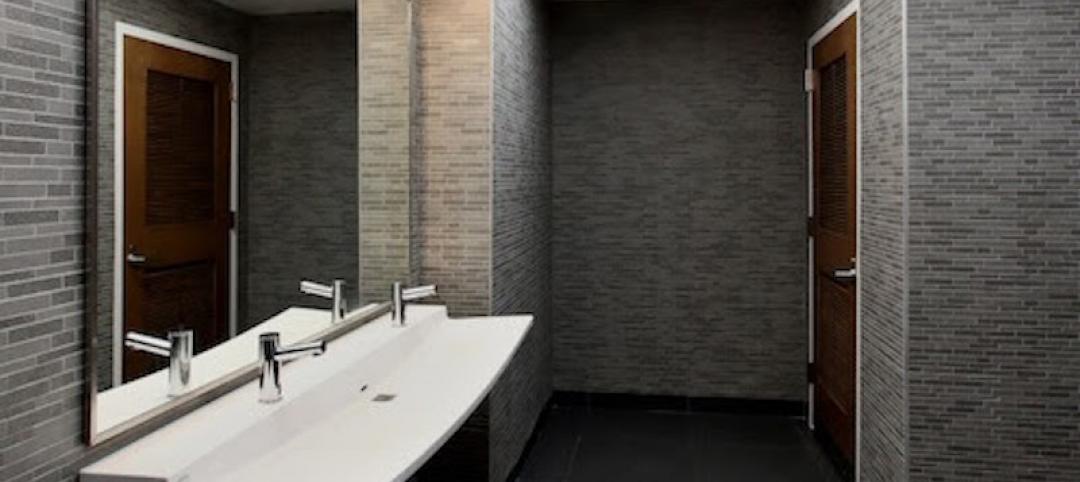The recently released International Construction Costs report, published by Arcadis, details the relative cost of building in 44 of the world’s major cities across 13 building types.
As part of the report, the top 10 most expensive cities in the world to build in are outlined, and a U.S. city is at the top of the list. New York led the way among all cities for construction costs, according to the report.
“New York rises to the top globally once again due to a lack of real estate availability, accessibility issues, and high real estate prices,” says David Hudd, Arcadis Cost and Commercial Director, in a release. ‘To build in such a dense urban environment like New York City, you must find solutions to control costs, such as expertly handling storage, transport and staging of building materials, identifying skilled construction firms and labor far in advance, and implementing modularized construction.”
New York isn’t showing any signs of slowing down either in terms of construction costs. The city is expected to remain the most expensive to build in into 2017 and beyond as large-scale construction projects and international investors drive development. The Big Apple is almost 50% more expensive to build in than the national average and is even 20% higher than other major and expensive cities such as Chicago, Los Angeles, Seattle, and Boston.
For the U.S., San Francisco is the second most expensive city to build in because of its cramped environment, rigorous seismic requirements, and competition for contractors.
In terms of worldwide construction costs, Hong Kong is in second place, followed by Geneva, London, and Macau. The entire top 10 list is as follows:
- New York
- Hong Kong
- Geneva
- London
- Macau
- Copenhagen
- Stockholm
- Frankfurt
- Paris
- Vienna
For the full report, click here.
Related Stories
Market Data | May 2, 2017
Nonresidential Spending loses steam after strong start to year
Spending in the segment totaled $708.6 billion on a seasonally adjusted, annualized basis.
Market Data | May 1, 2017
Nonresidential Fixed Investment surges despite sluggish economic in first quarter
Real gross domestic product (GDP) expanded 0.7 percent on a seasonally adjusted annualized rate during the first three months of the year.
Industry Research | Apr 28, 2017
A/E Industry lacks planning, but still spending large on hiring
The average 200-person A/E Firm is spending $200,000 on hiring, and not budgeting at all.
Architects | Apr 27, 2017
Number of U.S. architects holds steady, while professional mobility increases
New data from NCARB reveals that while the number of architects remains consistent, practitioners are looking to get licensed in multiple states.
Market Data | Apr 6, 2017
Architecture marketing: 5 tools to measure success
We’ve identified five architecture marketing tools that will help your firm evaluate if it’s on the track to more leads, higher growth, and broader brand visibility.
Market Data | Apr 3, 2017
Public nonresidential construction spending rebounds; overall spending unchanged in February
The segment totaled $701.9 billion on a seasonally adjusted annualized rate for the month, marking the seventh consecutive month in which nonresidential spending sat above the $700 billion threshold.
Market Data | Mar 29, 2017
Contractor confidence ends 2016 down but still in positive territory
Although all three diffusion indices in the survey fell by more than five points they remain well above the threshold of 50, which signals that construction activity will continue to be one of the few significant drivers of economic growth.
Industry Research | Mar 24, 2017
The business costs and benefits of restroom maintenance
Businesses that have pleasant, well-maintained restrooms can turn into customer magnets.
Industry Research | Mar 22, 2017
Progress on addressing US infrastructure gap likely to be slow despite calls to action
Due to a lack of bipartisan agreement over funding mechanisms, as well as regulatory hurdles and practical constraints, Moody’s expects additional spending to be modest in 2017 and 2018.
Industry Research | Mar 21, 2017
Staff recruitment and retention is main concern among respondents of State of Senior Living 2017 survey
The survey asks respondents to share their expertise and insights on Baby Boomer expectations, healthcare reform, staff recruitment and retention, for-profit competitive growth, and the needs of middle-income residents.
















